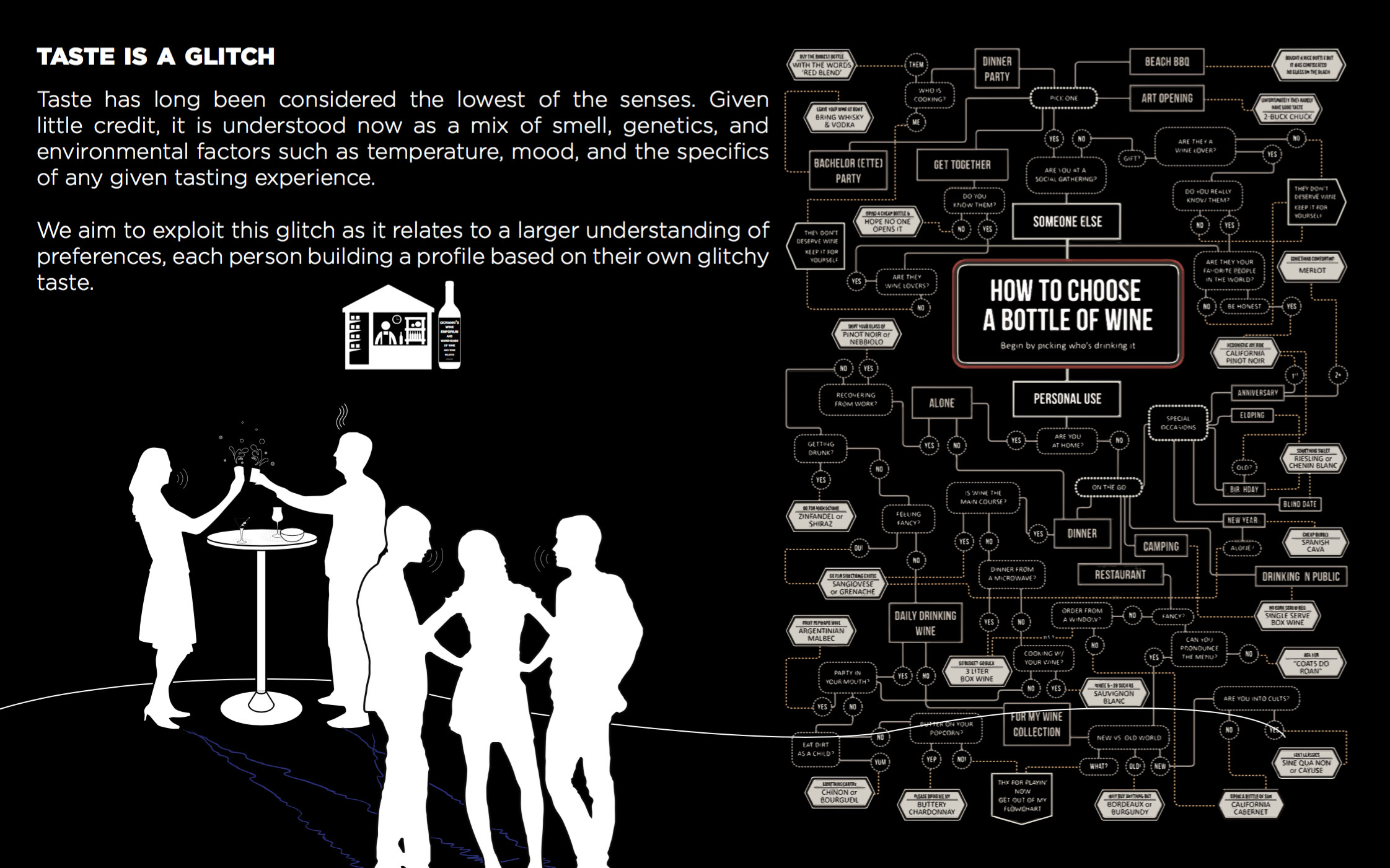Responsive Environments: Glitchy Food
Today, more than ever before, we feel the technological presence as part of our everyday life. The all-pervasive nature of digital information and technological interaction affects all scales—from our bodies to the larger urban contexts we occupy and the infrastructures that support them. This technological presence has a strong impact on our perception of the urban environment, and hence on the way in which we can embed technology in our design strategies. Current models tend towards performance and efficiency-driven urban systems, architectural spaces, and human interactions. A contextual and a cultural implementations of new technologies almost standardize the evolution of our built environment, leaving no room for imperfections and anomalies. But how can the spaces, infrastructures, and places that define the social experience of tangible environments not incorporate elements of inherent spontaneity, creativity, and even error?
This course looks at the concept of ‘glitches’ as a research strategy to embed serendipity and potential for creativity in the design of the built environment using responsive technologies. A glitch is defined as a temporary, transient fault in a system that corrects itself. Glitches are cracks, frictions that create ‘openings’ in a particular system, revealing new meanings of the system itself. By looking at the opportunities that can be found in errors that happen in an unpredictable way this class will explore design strategies that create the conditions for serendipity to emerge—sparking creativity and eventually fostering innovation. As a starting point and based on on-going research at the Responsive Environments and Artifacts Lab, the class will start by looking at food networks in the city of Bergamo in the Lombardy region as a starting point to map and understand the city and identify potential ‘glitches’ in the system for responsive interventions.
This seminar gives the theoretical and practical background through readings and discussions, examining current and past case studies. Hands-on workshops help students conceive and design working prototypes and speculative proposals of technologically driven and augmented environments. The course places an important emphasis on what makes the design of these responsive environments perceptually valid, technically feasible and practical. In addition to the concept of glitches, research topics including techniques of digital/physical inversion, body-centric interaction, and technological longevity will drive the class discussions. The course also covers the technical skills required to design and prototype digitally driven experiences through a series of workshops in relevant software/hardware.
This year the context of investigation will be food systems in the City of Bergamo, Italy. The first part of the course leading to the final project will constitute of readings, background research, site analysis, and technology documentation. The final project will be technologically driven a speculative design intervention, supported by prototypes and installations.
This course will include a trip to Bergamo, Italy, from February 7-14th. Preference in enrollment is given to MDes Technology students in their first semester as this course is a requirement. The trip is limited to 12 students. Contact Professor Sayegh with questions.
Projects
-

Uncork : Augmenting the wine tasting experience
Allen Sayegh, Faculty Advisor
Spring 2015